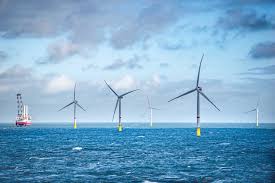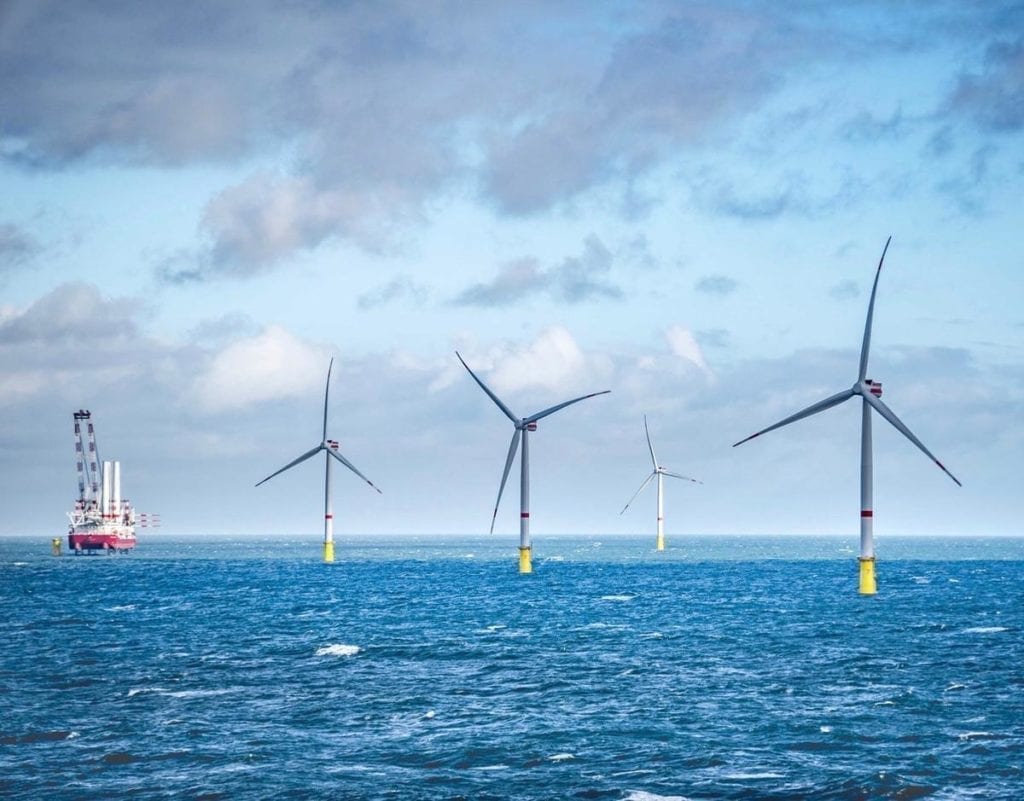Vineyard Wind Puts 800-MW Offshore Project on Hold
The post Vineyard Wind Puts 800-MW Offshore Project on Hold appeared first on POWER Magazine.

Officials with Vineyard Wind said they are temporarily withdrawing the group's application for federal approval to build the first large U.S. offshore wind farm, saying more time is needed to conduct a final technical review after announcing a change in the turbines expected to be used in the project.
Vineyard Wind, a joint venture between Avangrid Renewables and Copenhagen Infrastructure Partners (CIP), on Dec. 1 said it had chosen GE Renewable Energy's Haliade-X turbines, which have a generating capacity of 12 to 13 MW, to supply the wind farm. The 800-MW project originally planned to use 9.5-MW turbines from MHI Vestas Offshore Wind.
Use of the Haliade-X turbine will enable Vineyard Wind to reduce the number of towers in the development's first phase from 84 to 62. The group in a news release Tuesday said that As a part of reaching this important milestone, Vineyard Wind has decided to temporarily withdraw its Construction and Operations Plan (COP) from further review by the Bureau of Ocean Energy Management (BOEM) to allow the project team to conduct a final technical review associated with the inclusion of the Haliade-X into the final project design."
Located Off MassachusettsThe Vineyard project is slated to be installed about 15 miles off the coast of Martha's Vineyard, Massachusetts. Lars T. Pedersen, Vineyard Wind CEO, said, While the decision to pause the ongoing process was difficult, taking this step now avoids potentially more federal delays and we are convinced it will provide the shortest overall timeline for delivering the project as planned. We intend to restart the BOEM process from where we left off as soon as we complete the final review."
 A rendering of the Vineyard Wind project off Martha's Vineyard in Massachusetts. Courtesy: Vineyard Wind
A rendering of the Vineyard Wind project off Martha's Vineyard in Massachusetts. Courtesy: Vineyard WindVineyard Wind on Tuesday said it now expects to reach financial close on the project in the second half of 2021. The company has said it expects the wind farm to begin commercial operation in 2023. It reached a transmission agreement with ISO-New England, the regional grid operator, in October.
For more information about the U.S. offshore wind industry, read Offshore Wind Finding Direction in U.S." in the May 2020 issue of POWER.
A final federal decision on the wind farm had initially been expected by Aug. 16, 2019. The BOEM, though, that month said it would withhold the final EIS for Vineyard Wind, with the agency saying it wanted to study the wider impacts of offshore wind installations in an area also used heavily by the fishing industry.
Vineyard Wind had planned to financially close on the project and begin onshore construction work last year, with a schedule to enter commercial operation in 2022.
Regulatory UncertaintyAnalysts who have spoken with POWER have often said that uncertainty about regulation of U.S. offshore wind is slowing the sector's growth. Robert Freedman, a partner in the Project Development & Finance practice with Sherman & Sterling, told POWER, I would call it maybe [the] two C's, commercialization and conformity. Conformity is, you need some type of uniform set of rules that people can understand, that people can trust are the same, that can be applied similarly. The EU [European Union] has a directive for offshore wind, a much more uniform regime."
Said Freedman: The U.S. has a patchwork. Even with the BOEM, it's not clear how it will be applied. When you have that type of situation, where just don't have the conformity among different jurisdictions, and even within the same agency, there is no clear path or message, that's going to make it very difficult. As far as commercialization, there similarly needs to be a clear path, as to this is the technology we're going to use."
The latest delay in the project means the final decision on Vineyard Wind could come from the administration of President-elect Joe Biden. The U.S. Interior Dept. under the Trump administration has been criticized by renewable energy advocates for calling for additional environmental reviews for the project. Sen. Sheldon Whitehouse, a Rhode Island Democrat, last fall said the Trump administration was deliberately slow-walking" the permitting process for U.S. offshore wind projects, in order to appease the natural gas industry.
The first and thus far only commercially operating U.S. offshore wind farm is Orsted's 30-MW Block Island installation, which is located offshore Rhode Island.
Trump has been dismissive of wind power on several occasions. In a speech in Pennsylvania last year, in which he touted fossil fuels, he talked about big windmills that destroy everybody's property values, [and] kill all the birds." At the G7 conference in August 2019, he talked about the tremendous wealth" in the U.S., and said, I'm not going to lose that wealth, I'm not going to lose it on dreams, on windmills, which, frankly, aren't working too well."
Permitting ProcessA final environmental impact statement (EIS) on the Vineyard Wind project was scheduled to be released this month, with a record of decision (ROD) expected Jan. 15, 2021. The EIS and ROD are needed before construction can begin on the project. The initial COP for the project was submitted to the BOEM in December 2017. The BOEM published a supplement to its first draft EIS for the project in June of this year.
Lessening the number of wind turbines in the project is a move that could reduce the environmental impact of Vineyard Wind, though officials did not directly address that Tuesday.
The selection of GE as our preferred turbine supplier means that a historic American company will play a vital role in the development of the first commercial scale offshore wind power in the U.S.," said Pedersen. This is a huge moment not only for the future of our project, but also for the future of an industry that is poised for exponential growth in the coming decades."
Here is everything you should know about the #Vineyard1 #offshorewind farm to be installed off the coast of #Massachusetts with our #HaliadeX technology https://t.co/7wsf0e75Z2 pic.twitter.com/EcWsmfopH5
- GE Renewable Energy (@GErenewables) December 2, 2020
GE Renewable Energy is proud to partner with Vineyard Wind for the first major offshore wind project in the U.S.," said John Lavelle, president and CEO, Offshore Wind, at GE Renewable Energy. To be selected as the preferred supplier is an important sign of confidence for our proven technology and for all our employees around the world. We look forward to making this important contribution to the growth of offshore wind in the U.S."
Tom Kiernan, CEO of the American Wind Energy Association, in a statement Tuesday said, Today's announcement from Vineyard Wind and GE Renewable Energy is an exciting step forward for American offshore wind energy, putting the domestic clean power industry on the cutting edge of global wind power development. Wind power technology and innovation continues to rapidly progress, allowing the U.S. to generate more clean, reliable electricity at a lower cost. This collaboration takes the country closer to realizing a once in a generation opportunity that will advance the clean power industry and jumpstart job creation and economic investment along the East Coast."
The move to put Vineyard Wind on hold, though, highlights how U.S. offshore wind continues to experience fits and starts. Murray Rowden, managing director for the Americas and Global Head of Infrastructure at Turner & Townsend, a multinational project management company, acknowledged the difficulties faced by the U.S. offshore wind industry.
The wind energy market continues to move forward with policies promoting offshore wind as one of the next major opportunities for long-term industrial development. While opportunity exists, several challenges still need to be addressed and overcome including environmental and fishery impacts, grid connection and capacity, and federal permitting processes," Rowden told POWER. In addition, the Jones Act, which regulates coastal shipping, demands that large construction and installation vessels operating out of U.S. ports will have to meet certain U.S. crewing and ownership requirements, effectively excluding European shipping assets. While issues like this will impact the ability to replicate European operating models, it does also open up the opportunity for innovative installation strategies."
-Darrell Proctor is associate editor for POWER (@POWERmagazine).
The post Vineyard Wind Puts 800-MW Offshore Project on Hold appeared first on POWER Magazine.